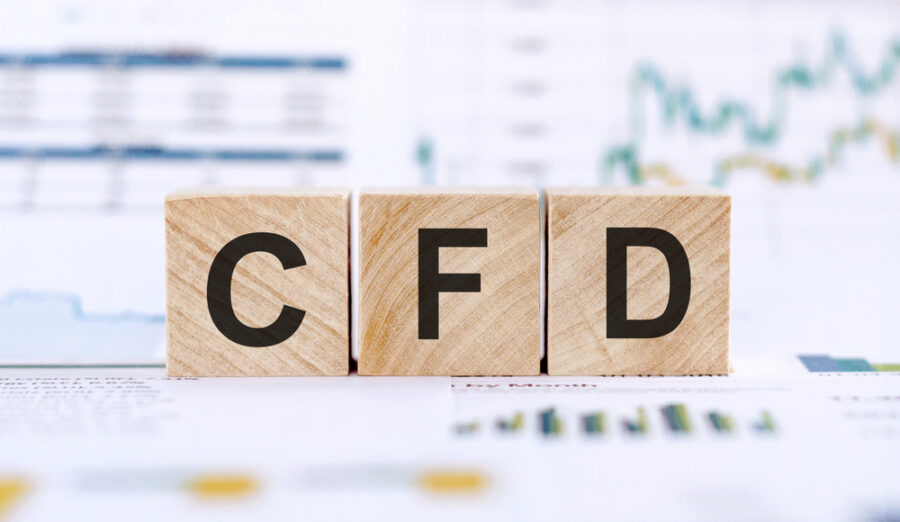Are you an experienced CFD trader looking to take your returns even further? Entering the field of Contracts for Difference, or CFDs, can be daunting – you only have one chance to get it right. That’s why we’ve put together this article with tips tailored explicitly to experienced traders. We’ll cover CFD basics and explore advanced topics, such as leverage strategies and risk management techniques.
Whether you’re a beginner or a veteran looking for ways to increase success in your trading endeavours, this article will provide plenty of relevant and actionable information. So, let’s start by closely examining what exactly Contracts for Difference are all about.
Understand the basics of CFD trading and the risks involved
For experienced traders looking to master CFDs, understanding the basics of how they work is the first step. Before you begin trading, you must know what you are dealing with. CFD stands for Contract for Difference, an agreement between two parties in which a buyer hopes to gain from small changes in the price of an underlying asset being traded.
The risk involved is that if your price movement prediction is wrong, you could be liable for more than what was initially invested. By understanding these risks and the basic concepts of trading, experienced traders can feel confident mastering their approach to CFDs.
Research different CFD providers, products, and services available
Researching CFD providers, products, and services available is an essential step in mastering CFDs. Experienced traders can determine which CFD provider offers the best rates and conditions that suit their needs. It’s also essential to know the CFD product features, such as CFD trading tools, platforms, and instruments, to identify which products offer the most value for your money.
The research process should also review each CFD provider’s customer service offering, any bonuses or promotions, and the number of markets they operate in. It will help experienced traders narrow down their options when it comes time to decide on who they want to trade with.
Develop a trading plan and strategy to fit your own goals
Once you’ve done your research, developing a CFD trading plan and strategy that fits your goals is crucial. Experienced traders can assess their risk appetite and consider what CFDs best suit their investment style. Creating an account with CFD providers who offer CFD leverage is also essential, allowing you to increase profits from small movements in the market potential.
With a clear trading goal in mind, experienced traders should consider setting up stop losses for CFDs – this will help limit the loss incurred if the price does not move as predicted. Finally, CFD traders should keep track of their trades using CFD trading logs or journals to review their successes and learnings over time.
Use risk management tools such as stop losses, trailing stops and position sizing to reduce risk exposure
Risk management is essential to mastering CFDs, as experienced traders should always look to minimise their risk exposure. Stop losses are a great way to limit the loss you can incur from CFD trading. Trailing stops and position sizing is also helpful for managing your capital when trading CFDs.
Trailing stops help reduce potential losses by allowing traders to set a price level where the trade will automatically be closed out if it drops below that value. Position sizing allows experienced traders to control the size of each CFD trade relative to the size of their bankroll – this helps them protect their capital and manage risk better when entering trades.
Use technical analysis to spot good entry points and avoid bad ones
Technical analysis is a crucial component of mastering CFDs. Experienced traders can use technical analysis to spot good entry points and identify profitable market opportunities. Technical indicators such as moving averages, relative strength index (RSI), and Bollinger bands can help experienced traders evaluate historical price data, recognise trading patterns, and determine appropriate trade entry points.
It’s also essential to know when to avoid entering a trade – for example if the market is highly volatile or forming a trend that doesn’t fit your strategy, staying out of the trade could be best until conditions improve. By using technical analysis, experienced traders can make informed decisions about when to enter and exit trades, helping them improve their chances of making successful trades.
Monitor your positions regularly and adjust them if necessary
Once you have entered a CFD trade, you must monitor your positions regularly and adjust them if necessary. Experienced traders should know about market changes affecting their trades, such as news events or sudden price movements. Knowing when to close or adjust positions is vital to minimising risk and maximising profit potential – this can be done through technical analysis or by setting a time limit on each position.
Finally, experienced traders should consider using automated trading systems such as Expert Advisors (EAs) for CFD trading. EAs are programs that use predefined rules and criteria to execute trades automatically – they can be used as an additional tool for monitoring market conditions and making more informed decisions about when to enter and exit trades.
More Stuff For Your Inspiration:
- No Related Posts
Related posts
Categories
- Around The World (369)
- Business (57)
- Education (9)
- Home Improvement (23)
- Humor (191)
- Inspiration (512)
- Lifestyle (21)
- Motivation (2)
- News (31)
- Photo of the Day (257)
- Photography (105)
- Technology (61)
- Travel (8)



